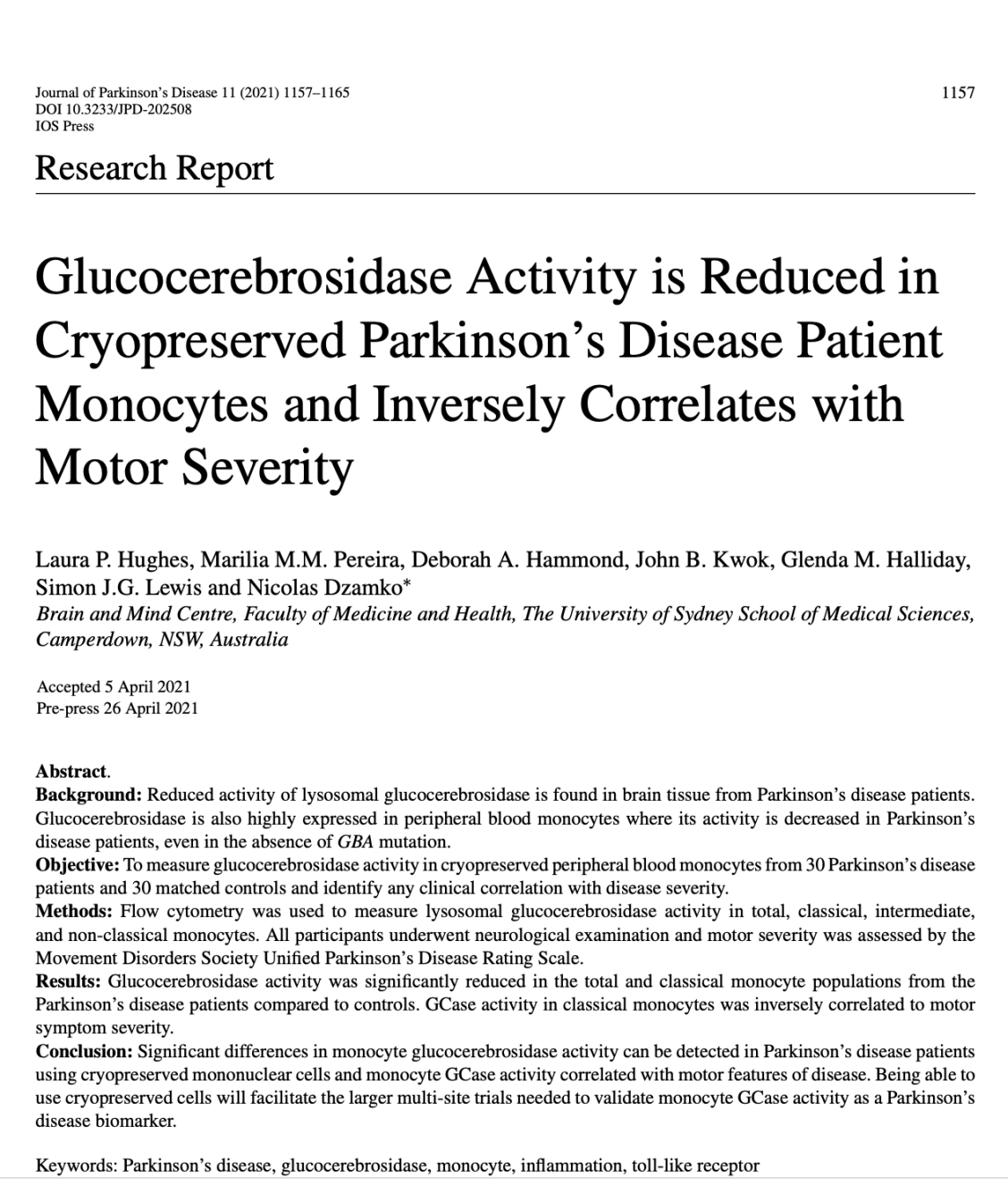Hughes, L. P., Pereira, M. M., Hammond, D. A., Kwok, J. B., Halliday, G. M., Lewis, S. J., & Dzamko, N. (2021). Glucocerebrosidase Activity is Reduced in Cryopreserved Parkinson’s Disease Patient Monocytes and Inversely Correlates with Motor Severity. Journal of Parkinson's Disease, (Preprint), 1-9.
Clinical challenges associated with Parkinson’s disease (PD) include the inability to make a definitive diagnosis in the early stages of disease, and difficulties in predicting and monitoring disease progression. By the time a patient presents with symptoms of disease, approximately 70-80% of dopamine neurons have already been lost. The identification and validation of reliable biomarkers for PD may enable earlier diagnosis and therapeutic intervention, and help to evaluate the clinical efficacy of new treatments.
One candidate biomarker is a lysosomal enzyme called Glucocerebrosidase (GCase), which breaks down a molecule called glucosylceramide into glucose and ceramide. Homozygous mutations in GBA1, the gene encoding GCase, are associated with the lysosomal storage disorder Gaucher’s disease, whereas heterozygous mutations in GBA1 are associated with increased risk of developing PD. While GBA1 mutations occur in approximately 5-15% of PD cases, reduced GCase activity is also observed in idiopathic PD, suggesting that impaired GCase activity may be a common mechanism in this disease.
Through the use of flow cytometry, our recently published study confirms previous reports of reduced GCase activity in peripheral blood monocytes of PD patients relative to healthy controls, and provides new insight by correlating this reduction in enzyme activity with the severity of motor symptoms experienced by patients. This study also validates the use of cryopreserved immune cells for the measurement of GCase activity, which will facilitate the larger, multi-centre trials needed to validate peripheral GCase activity as a PD biomarker.
The use of GCase enzyme activity as a biomarker for PD may assist in earlier diagnosis, disease stratification, and the evaluation of new therapeutics.
